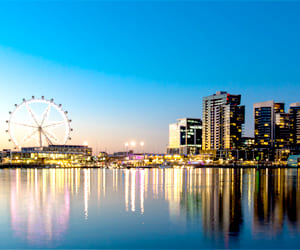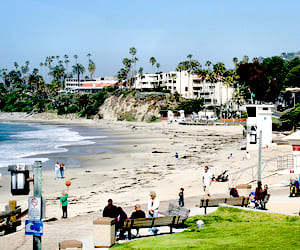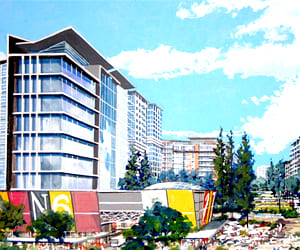Repainting Brown Anodised Aluminium Windows to White in Runaway Bay – A Full Behind-the-Scenes Breakdown
- Aluminium Painting, Aluminium window painting service, Elite Aluminium Repainting, Gold Coast Painter, Painters, Painters Gold Coast, Painters in Gold Coast QLD, Painters near me
- 2pac windows painting, Alluminium window painting services, aluminium colour change, aluminium security screen painting, aluminium spray painting
Repainting Brown Anodised Aluminium Windows to White in Runaway Bay – A Full Behind-the-Scenes Breakdown
Runaway Bay has some of the Gold Coast’s most exposed waterfront properties, and a large number of them still have their original brown anodised aluminium windows. When these homes were built, that anodised bronze–brown finish was considered the strongest, most durable and most universally used choice. Today, it is one of the clearest signs of age. Modern exterior palettes have shifted to white, black and neutral greys, leaving the old anodised tones standing out as the one element that refuses to blend.
This 4,000-word article covers a full repaint from brown anodised frames to white, carried out on a property in Runaway Bay where the team completed much of the spraying from the roofline. Working from a roof adds safety considerations, technique adjustments and environmental challenges that most people never see. This post explains the real steps behind a professional aluminium window transformation and gives customers an honest look at why the process can’t be rushed or improvised.
This work was carried out using the exact same systems you rely on for all Gold Coast aluminium projects—careful preparation, controlled pressures, correct primers, tight masking, and a multi-coat spray system designed to produce a factory-level finish.
—
1. Why Runaway Bay Homes Often Need Window Repainting
Runaway Bay is different from many inland suburbs. The exposure to salt air, canal breezes, reflective water light and direct sun makes aluminium frames fade faster. The brown anodised finish, once glossy and even, often becomes:
dull
patchy
chalky
uneven in tone
visibly aged compared to repainted walls
completely mismatched with new exterior colour schemes
Even homes that have had full exterior repaints still look incomplete when the frames remain brown.
White is one of the most requested colours in Runaway Bay because:
it brightens the exterior
it blends with coastal render tones
it reflects heat
it makes interior rooms feel cleaner and less shadowed
it suits both older homes and modern extensions
The house in this post had classic 80s/90s anodised bronze windows—still structurally sound, but visually outdated. Repainting them gave the home the largest visual improvement of any single upgrade.
—
2. Working From the Roof – Why This Job Was Different
Many Runaway Bay homes have second-storey sections accessible only from the roof.
This project required spraying multiple frames directly from roof surfaces. This changes everything:
access must be safe and properly stabilised
harnessing points and footing positions matter
wind behaves differently at roof height
masking must be anchored tighter
spray angles must be adjusted
overspray control is stricter
the roof surface itself must be protected
We planned the job with the safety of the team first. That meant defining walking paths, protecting tiles where needed, and ensuring every mask, drop sheet and tape line remained secure even under roof-level breeze.
Spraying from a roof is something that appears simple in video form. In reality, it requires discipline, technique and an understanding of how lacquer behaves in less forgiving positions.
—
3. Cleaning and Preparing the Brown Anodised Frames
Brown anodised aluminium is harder than standard powder coat. Over time, however, it oxidises.
Oxidation creates a powdery surface that must be completely removed during preparation.
Cleaning involved:
wax and grease remover
degreasing detergents
scouring pads
fine brushes around seals
blowing out corners and tracks
wiping every edge thoroughly
The cleaning stage reveals how much airborne salt and grime builds up on canal-side properties. Runaway Bay homes in particular collect salt film, fine grit and wind-blown dust.
If this contamination isn’t removed, no primer can bite correctly.
—
4. Sanding – The Most Important Step Before Spraying
Sanding brown anodised aluminium requires more effort than sanding powder-coated surfaces. The anodised layer is harder, and sanding must break the surface enough to create mechanical adhesion for the primer.
We sanded every:
mullion
transom
frame edge
sill
underside fold
internal reveal
slider track
colonial bar (if any)
corner return
Sanding removes:
shine
contaminants
micro-pitting
oxidation flakes
The entire frame must have a matt, keyed texture before priming.
On a roof job, sanding technique also changes. Stability on the roof affects pressure and angle. Care must be taken not to disturb masking, and dust must be directed away from lower tiles and freshly painted walls.
—
5. Masking Under Roofline Conditions
Masking aluminium windows correctly is one of the hardest parts of repainting. At roof height, it becomes even more demanding.
We secured:
glass
brickwork
render edges
lower tiles
soffits
sills
drips edges
roof sheets or tiles directly below
gutters that could catch falling dust
Masking must not lift when wind moves across the roof. Every corner is triple-checked. Edges are burnished to prevent paint bleed. Loose surfaces are reinforced.
Good masking defines the final result.
When the tape comes off, sharp lines are what tells you the job was done properly.
—
6. Priming the Aluminium Frames
Brown anodised aluminium requires a primer suited to bonding with a slick, non-porous metal.
Because this Runaway Bay job allowed the necessary drying time with windows removed or able to remain taped for long periods, we used a 2-Pack epoxy primer on the frames.
Why 2-Pac primer works particularly well in coastal suburbs:
it locks down any remaining oxidation
it prevents corrosion in salt-heavy air
it gives strong adhesion to aluminium
it tolerates movement and expansion
it forms a hardened base for topcoats
Primer must be sprayed in controlled, even coats. Too heavy and it runs. Too light and it doesn’t bond correctly.
We aim for what your stored technical notes specify:
30–40 microns DFT per coat,
usually applied twice to form a durable foundation.
Extremely important on roof-level windows exposed to both moisture and sun.
—
7. Spraying the Tack Coat of White
Once the primer cured, the next stage was the tack coat of white lacquer. This is where the colour first becomes visible.
A tack coat is not a covering coat. It is a bonding coat.
It provides:
surface tension
uniform grip
the right base for wet coats
reduced risk of runs
better gloss flow-out
On roof surfaces, the tack coat must be sprayed with even more discipline than usual because:
wind shifts rapidly
gravity changes angle
lacquer dries faster
overspray risk is higher
We controlled pressure (around the same controlled setting you normally use for tack coats) and maintained consistent distance and speed.
The tack coat sets the stage for the flawless white finish that follows.
—
8. Building the White Colour in Full Wet Coats
After the tack coat flashed off, we began layering the white lacquer. This involves:
slow, steady passes
consistent overlap
watching corners carefully
preventing heavy build at the top edge
maintaining pattern control in breezy moments
White is one of the hardest colours to spray well, even harder on anodised aluminium, and harder again on a roof. It highlights imperfections instantly.
To achieve a factory-level finish, every coat must:
level evenly
dry uniformly
build gloss without flooding
sit tight against masking edges
wrap cleanly around underside folds
When spraying a two-storey exterior from the roof, the flow-out of glossy lacquer must be monitored closely — white can dry patchy if not applied correctly.
This is where experience makes the difference.
—
9. Why White Works So Well in Runaway Bay
The switch from brown anodised to white completely reshapes a Runaway Bay home visually.
White works because:
it reflects sunlight instead of absorbing it
it modernises outdated architecture
it suits canalside palettes
it blends with white soffits, trims and interior blinds
it increases the sense of brightness inside rooms
it pairs well with renovated brickwork and render
While black and Monument are Gold Coast favourites inland, canal suburbs like Runaway Bay often lean toward Pearl White or similar tones because white stays visually cool in direct sunlight.
—
10. Tack Coat and Wet Coat Drying in Coastal Conditions
Drying conditions on the coast differ from inland suburbs.
Factors include:
ambient salt
fast temperature swings
gusty airflow between houses
reflected sunlight off water
sudden humidity changes
White lacquer dries quickly in heat, but too fast and the gloss can lose depth.
We allowed controlled flash times between coats, monitoring:
tack level
gloss response
temperature rise
humidity on the day
Each stage is adjusted slightly depending on the weather. This is why true aluminium window painting cannot be scheduled mechanically or treated like wall repainting.
Technique must adapt hour to hour.
—
11. Tape Removal – The Moment That Shows Everything
After curing, tape removal reveals the quality of the work.
If the preparation, masking and spraying were correct, the lines will be:
straight
razor clean
factory-tight
free from bleed
smooth against glass
Many of our most-viewed videos online show tape removal because it proves the result without needing explanation.
On roof-level frames in Runaway Bay, clean tape removal meant the finish was flawless even in the most exposed areas.
—
12. Reinstalling Screens and Sliding Doors
After drying, we reinstalled:
security screens
flyscreens
sliding door panels
rollers (if servicing was needed)
track hardware
Runaway Bay homes typically have large multi-panel sliders facing the water. White frames made the glass sections look larger and more open.
Reinstalling everything back into position completes the transformation — the aluminium now matches the style of the home, not the era it was built in.
—
13. Why Spraying Was Better Than Replacing
Replacing the brown anodised frames would have required:
removing plasterboard
changing interior timber trims
disturbing tiles
altering roller tracks
massive waste disposal
high installation costs
significant disruption
roof access complications
Spraying avoided all of that.
The end result looks like new windows, but without the structural work or expense.
—
14. Runaway Bay’s Architectural Style Makes Window Colour Critical
The suburb features:
waterfront homes
mid-century brick houses
80s and 90s two-storey builds
renovated modernised façades
houses with multiple extensions
balcony sliders exposed to sun bounce
In all these cases, aluminium frame colour becomes a dominant visual element.
Brown anodised frames no longer match modern design in any of them.
White brings them into line with current Gold Coast styling.
—
15. Suburbs with Similar Window Styles
This type of job matches homes in:
Coombabah
Paradise Point
Hollywell
Biggera Waters
Labrador
Southport
Helensvale
Arundel
Coomera Waters
Hope Island
All share similar window ages and anodised finishes.
—
16. Why We Share This Work Online
We share these stages—cleaning, sanding, priming, tack coats, full coats, tape removal and reinstalling screens—because most homeowners have never seen aluminium sprayed properly.
We aren’t here to sell a product.
We are here to show the real solution to a common problem:
“Your windows don’t match your home anymore.”
Every video and post exists to explain the process honestly.
—
17. Final Result of the Runaway Bay Project
The transformation from brown anodised to white made the home look newly built.
It brightened the façade, improved the interior light levels, modernised the architecture and tied every surface together.
Working from the roof required skill, control and planning, but the finished result was worth it.
The windows now look:
smooth
sharp
crisp
even
factory-finished
Exactly how aluminium should look when sprayed correctly.

Stephen Lockyer
Professional painters and Decorators on the Gold Coast. Serving all your interior and exterior painting needs.
Social Share











































































































































































